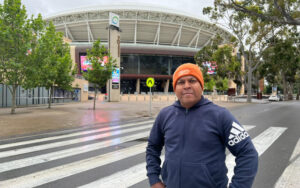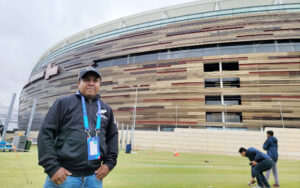
The Indian cricket team is currently touring Australia for the much-anticipated Border-Gavaskar Trophy, which gets underway at the Optus stadium in Perth from November 22. Rohit Sharma and his boys will play five Test matches against the Aussies. The Indian captain did not travel to Australia with the team owing to family commitments. The Indian cricketers will be practicing at the WACA ground over the next week, trying to acclimatise to the conditions and pitches.
It is always challenging for visiting teams to tour Down Under. The Indians did find it tough as it took them 71 years after their first tour Down Under in 1947-48 to win a Test series on Australian soil. Virat Kohli led side defeated the Aussies in 2018-19. The Indian team then won again in Australia during the previous tour in 2021-22.
Cricket is a quintessential part of Australian culture, and covering the sport can be both thrilling and daunting. For journalists and photographers covering cricket in Australia, the experience offers unique challenges due to the country’s vastness, extreme weather conditions, and logistical hurdles.
For the Latest Sports News: Click Here

The weather in Australia can be unpredictable and this can be particularly challenging. Take for instance, Perth, the venue for the first Test of the series. The West Australian city experiences some of the hottest temperatures in the country, with the sun so intense that it can cause devices to overheat and shut down. Heat exhaustion is a real concern for photographers working on the ground, especially during long, hot days at the old WACA or Optus Stadium. The oppressive conditions not only make it difficult for journalists, but also for players and spectators.
Even in other cities like Adelaide and Melbourne, where the weather is generally more temperate, sudden temperature drops can be a serious challenge. It is not unusual for someone to leave their hotel room in Melbourne wearing shorts and a T-shirt, only to find that the temperature has plummeted by 20°C in a matter of hours.
Another challenge of covering cricket Down Under are the vast distances that needs to be covered from one city to another given the nature of its landscape. A flight from Sydney to Perth, for instance, is a nearly 4,000-kilometre journey—about the same as flying halfway from India to London. Domestic travel across the country is also lengthy, and this can be exhausting for journalists covering multiple matches over the course of a long season.

Even between other major cities, flights are often over two hours long. The sheer travel fatigue can be overwhelming, and the need to adapt to different time zones and climates makes the job even harder.
In the past, food had been a significant challenge for anyone from the subcontinent covering cricket in Australia. The touring Indian media in the past often had to contend with limited culinary options, especially in smaller cities. However, this has changed significantly in recent years, particularly with the rise of Indian restaurants and food culture. Today, in nearly every major city in Australia, you will find a wealth of high-quality Indian restaurants.
Covering cricket in Australia is an exciting and dynamic experience, but it comes with its own set of unique challenges. From the harsh weather conditions to the vast distances, the physical and logistical demands on travelling media are immense. However, the country’s passionate cricket culture makes it a rewarding place to cover the sport. The challenges are outweighed by the thrills of experiencing world-class cricket in one of the most diverse and stunning countries on the planet.
Also Read: From signed shirt to dropping in at Kirribilli House, Aus memories to savour




